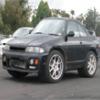Crap Fuel Economey...
Announcements
-
Similar Content
-
Latest Posts
-
By nzstubbies · Posted
Hi All, I'm based in Sydney and want to get hold of 4 stock R34 GTT wheel caps as pictured. Cheers -
Haha im flattered! Although my poor boat is collecting dust in the garage, as it hasn’t been driven in like 6 months. I forgot the to put the trickle charger on too, so the battery is likely toast now.. I have the frenchys kit. It is fantastic. My only gripe was that the hard lines from the firewall needed some tweaking, however, this was mainly due to my specific turbo and dump combo. The weight and size packaging is much nicer too. I think I have some pics on my build thread somewhere.. my justification for the kit was more “why not” I had gone to the trouble to modernise just about every other part of the car..
-
Actually, ethanol has probably never been cheaper, on a tax free basis, than petrol. With fuel excise being what it is, and only being levied on the hydocarbon component, not the ethanol component, and ethanol for non-drinking purposes not being subject to liquor excise - E85 was cheaper, but not because the combustible liquid itself was particularly cheaper.
-
By Murray_Calavera · Posted
Maybe? If changing the cat to a higher flowing cat, caused the turbo to spool more quickly, and those areas of the map had not been tuned for the boost level it is now seeing, then yes you would need a re-tune. How dangerous it is running without the updated tune would depend on how far out the tune is with the now higher boost levels, how the engine protection has been setup, is the ECU compensating with a wideband sensor, is the boost control closed loop blah blah million other things... But yeah having said that, I wouldn't be surprised if changing out the cat for a high flow, in say a full 3" exhaust, made no noticeable difference at all. -
Ah yep. I asked a auto electrician about getting a cheap rebuilt alternator vs a new one. He also said he used to it back in the day but it ended up costing similar to what a new one would and recommended getting a new one,.
-





Recommended Posts
Create an account or sign in to comment
You need to be a member in order to leave a comment
Create an account
Sign up for a new account in our community. It's easy!
Register a new accountSign in
Already have an account? Sign in here.
Sign In Now